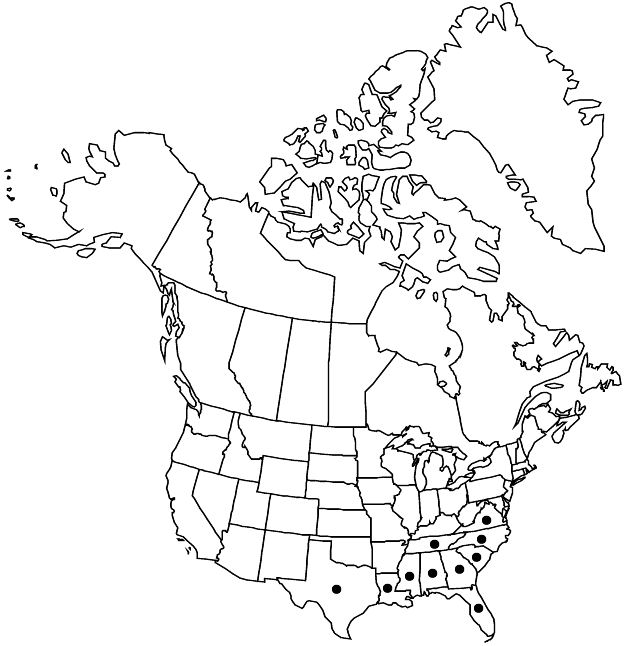Phyllanthus tenellus
Fl. Ind. ed. 1832, 3: 668. 1832.
Herbs, annual, monoecious, 2–5 dm; branching phyllanthoid. Stems: main stems terete, not winged, glabrous or scabridulous; ultimate branchlets subterete, not winged, glabrous or scabridulous. Leaves on main stems spiral, scalelike; stipules not auriculate, reddish brown. Leaves on ultimate branchlets distichous, well developed; stipules not auriculate, pale green or pink with paler margins; blade elliptic to obovate, 6–25 × 4–11 mm, base acute to rounded, apex acute to obtuse, both surfaces glabrous. Inflorescences cymules or flowers solitary, proximal bisexual with 1–2 pistillate flowers and 2–3 staminate flowers, distal with 1 pistillate flower. Pedicels: staminate 0.5–1.5 mm, pistillate flexuous, capillary, and pendent in fruit, (2.5–)3–8 mm. Staminate flowers: sepals 5, white except green midrib, flat, 0.4–0.7 mm; nectary extrastaminal, 5 glands; stamens 5, filaments distinct. Pistillate flowers: sepals 5, white except green midrib, flat, 0.6–0.8 mm, 1-veined; nectary annular, unlobed. Capsules 1.7–1.9 mm diam., smooth. Seeds uniformly brown, 0.8–0.9 mm, evenly papillate. 2n = 26.
Phenology: Flowering and fruiting spring–fall (year-round in southern areas).
Habitat: Fields, gardens, roadsides, other disturbed areas, especially with sandy soils.
Elevation: 10–500 m.
Distribution

Introduced; Ala., Fla., Ga., La., Miss., N.C., S.C., Tenn., Tex., Va., Asia, Africa, Indian Ocean Islands, introduced also in Mexico, West Indies, South America, Atlantic Islands (Macaronesia), Pacific Islands, Australia.
Discussion
Phyllanthus tenellus is easily recognized by its long, capillary pistillate pedicels that are flexuous and pendent in fruit; it is native to the Mascarene Islands and perhaps to eastern Africa, other western Indian Ocean Islands, and the Arabian Peninsula, and is widely naturalized in tropical and subtropical regions worldwide. It appears to have been introduced into Florida in the 1920s and is continuing to spread. Phyllanthus tenellus has been reported from Arkansas (E. Sundell et al. 1999) and California as a nursery weed (G. F. Hrusa, pers. comm.), and from Oklahoma in flower beds (B. W. Hoagland, pers. comm.), and may be expected to become naturalized in those states.
Selected References
None.